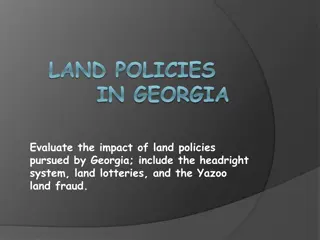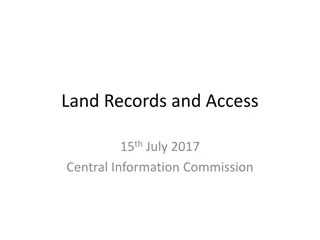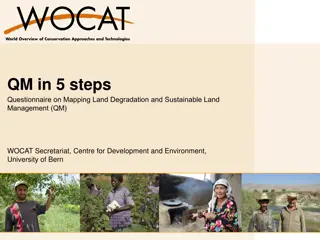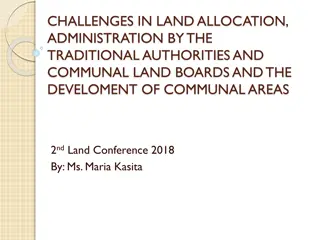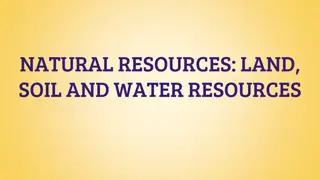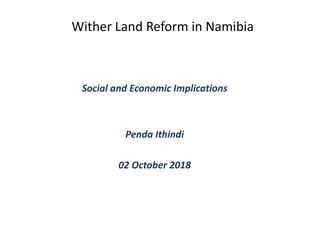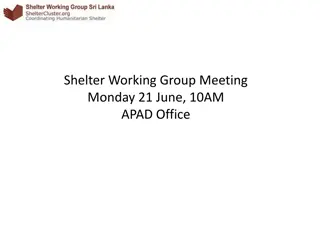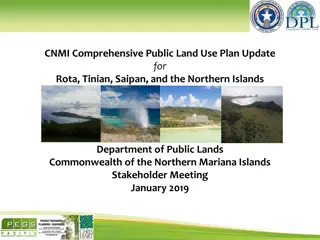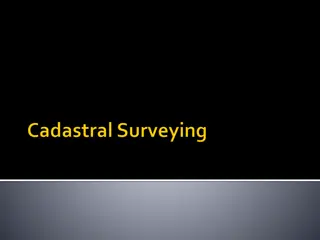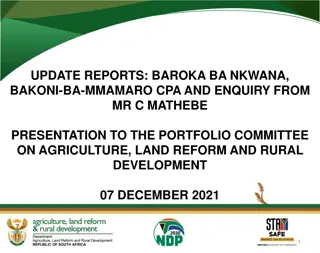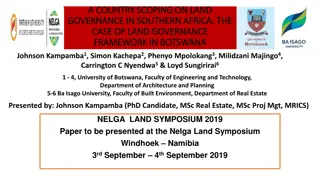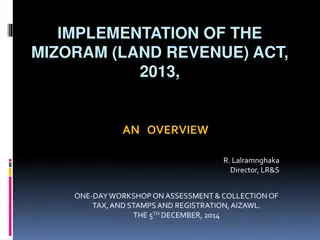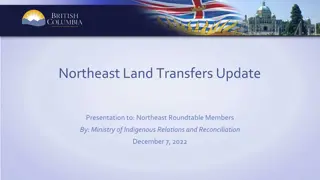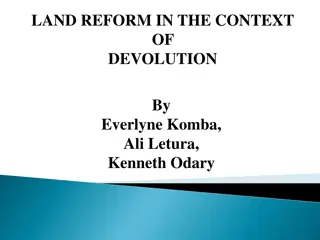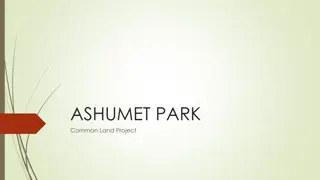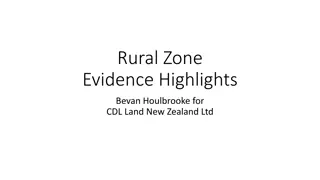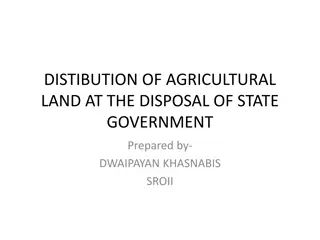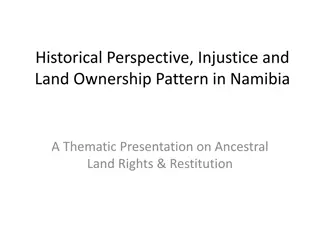Future of Severely Affected Land (FOSAL)
The FOSAL program for Category 3 homes at intolerable risk. Learn about risk categorization, buyout framework, and more. Delve into the differences between FOSAL and stickers. Consider costs and government buyout options.
Download Presentation

Please find below an Image/Link to download the presentation.
The content on the website is provided AS IS for your information and personal use only. It may not be sold, licensed, or shared on other websites without obtaining consent from the author. Download presentation by click this link. If you encounter any issues during the download, it is possible that the publisher has removed the file from their server.
E N D
Presentation Transcript
Waikato District Council Future of Severely Affected Land (FOSAL) Jim Ebenhoh and Reece Turner, 5 Dec 2024
Agenda What is FOSAL? What is the difference between FOSAL and Stickers? What have other councils down? What could be the costs? Potential Government Buyout Framework Non-Buyout Options Discussion / Questions
What is FOSAL? Future of Severely Affected Land Specific to damage from Cyclone Gabrielle and related storm events An optional buy out process which council can undertake alongside government to buy back Category 3 homes that face intolerable risk with no practicable mitigation options.
What is a Red / Yellow Sticker? Yellow Sticker A yellow sticker means that access to your building is restricted, and it cannot be used, or you cannot enter except under supervision for a limited time or on essential business. It also means part or all the building may have sustained moderate damage, or some areas of the building, neighboring buildings, or land instability pose a significant risk. Red Sticker A red sticker means entry is prohibited. Your building may pose a significant risk to you, the public, health and wellbeing. The risk could be from the building itself, from adjacent buildings or from land instability.
What are the difference between a placard / sticker and FOSAL? In brief: immediate safety risk (state of building / property NOW indicated by stickers) vs future risk (FOSAL) The placarding process and the risk categorisation are two different and independent processes the colour of a sticker doesn t determine a property s risk category. Rapid building assessments were used to assign stickers. These assessments determine whether a building is safe to occupy and if it poses a safety risk to others based on the current state of the building and / or land. Stickers indicate a building s level of safety and whether people can be in it. Only authorised officials can place, change or remove them. A white placard means there are no access restrictions, a yellow placard means access is restricted, and a red placard means access is prohibited. FOSAL s property risk categorisation process assesses properties based on the likelihood of impacts and risk to life during future severe weather events.
FOSAL PROCESS Source: Department of Prime Minister & Cabinet
What have we done so far? Tonkin & Taylor have assessed those properties that were affected in the North Island Severe Weather Events. The assessment tool used was in line with Auckland City Council (insert link to doc)
What have other councils done? Hawkes Bay / Tairawhiti councils have agreed to a 50/50 buy out package for Category 3 homes Hawkes Bay / Tairawhiti councils have created a policy that specifies that this is not a commitment from council to fund additional buys outs due to future weather events Auckland City Council has agreed to a 50/50 buy out package for Category 3 homes Auckland City Council have determined that if the cost of mitigations to Category 2 homes are higher than 25% of the property CV then the house will be reclassified as Category 3. Northland councils and Tauranga City Council have not made a decision on classification as yet.
Homes Categories (T&T preliminary assessment) Category 2P (35 Homes) 201, 199, 197, 195, 193, 191, 189, 187, 185, 183, 181, 179, 177, 175, 173, 171, 169, 167, 165, 163, 161, 159, 157, 155, 139a, 137a, 131, 129, 123, 115B, 81, 77 Maunsell Road and 17, 15, 13 Tuakau Bridge - Port Waikato Road Category 3 (1 Home) 207 Maunsell Road - could be downgraded to 2p following an assessment but large amounts of debris could come down and little space to attenuate debris
AFFECTED AREA
Property Values Category 2P Homes (35) $19,600,000 Category 3 Homes (1) $600,000 Red Sticker Homes (4) $1,435,000 Yellow Sticker Homes (4) $4,200,000
Pros and Cons of Buy Out Pros: Complete removal of risk to property No cost to property owner Cons: Administrative burden including agreeing valuation and actioning buy out Increased staffing levels support the Recovery Team to delivery buyout process Precedent / pressure for Category 2 to be reclassified as Category 3 Council would cover the cost to removal of property
What about Category 2? Consider Auckland approach of reclassifying as Category 3 (and potential buyout) if costs are above (say) 25% of CV Or contribute in some way to necessary repairs / mitigation? Need to understand role / scope of insurance coverage Precedent / cost issues


